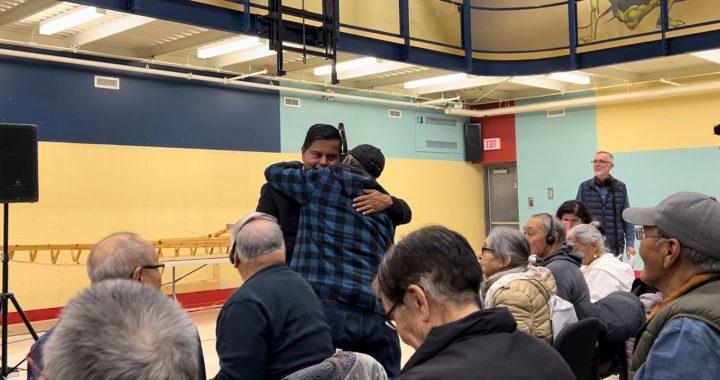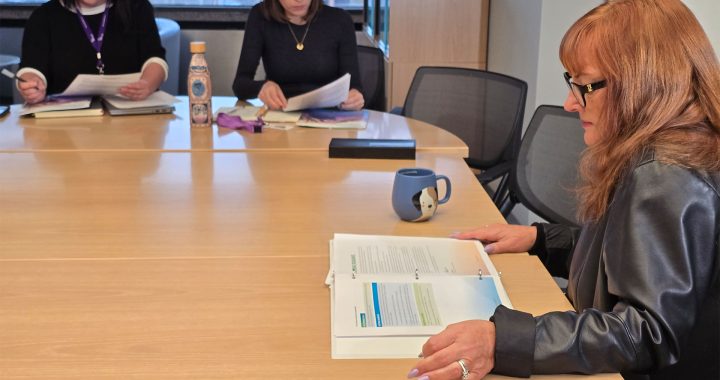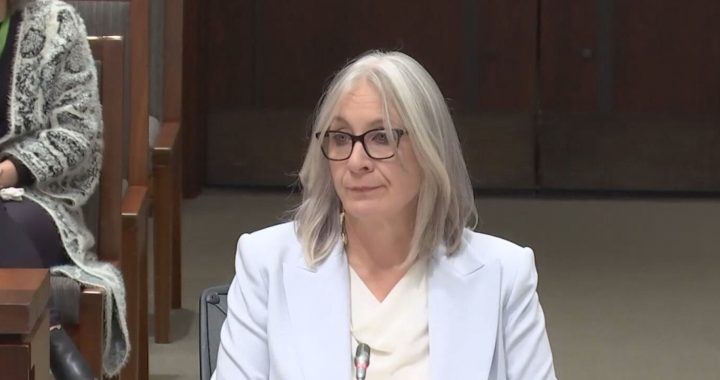(Pictured: Aboriginal Affairs Minister Bernard Valcourt)
By Steve Rennie
The Canadian Press
OTTAWA--Canada’s Department of Aboriginal Affairs has been robbing Peter to pay Paul.
In this case, “Peter” is the department’s infrastructure budget and “Paul” refers to its cash-strapped social and education programs.
A new document shows Aboriginal Affairs and Northern Development Canada (AANDC) shifted half a billion dollars meant for infrastructure over a six-year period to try to cover shortfalls elsewhere.
The result? The department’s already strapped infrastructure program is starting to buckle while its social and education needs are still falling short.
“Significant reallocations from infrastructure to other programs have occurred over the past six years,” says the June 2013 document. “For example, AANDC has reallocated approximately $505 million in infrastructure dollars to social, education and other programs to try to fill the shortfall in these areas.
“Since infrastructure was not able to cover off all of social and education needs in each year, other internal resources were used to cover off the remaining shortfall.
“This ongoing reallocation is putting pressure on an already strained infrastructure program and has still not been enough to adequately meet the needs of social and education programs.”
Using infrastructure money for other purposes has a real impact on aboriginal communities, said Franklin Paibomsai, chief of the Whitefish River First Nation in northern Ontario. Schools don’t get built and communities get put under boil-water advisories, he said.
“So those are the impacts. They’re real, because they really hit home. They’re bread-and-butter pieces for every community,” Paibomsai said in an interview.
“Somehow people don’t realize that, OK, we took half a billion dollars away to put into social programming to help First Nations, now somebody doesn’t have access to potable water. I mean, that’s real. That’s as real as it gets.”
The 22-page document, which appears to be a slide show presentation, is buried within a mountain of paperwork filed as part of First Nations advocate Cindy Blackstock’s long battle at the Canadian Human Rights Tribunal to get aboriginal children the same funding from the federal government as non-aboriginal kids get from the provinces.
The Liberal party’s critic for aboriginal affairs, MP Carolyn Bennett, said the document shows First Nations communities are not getting the funding they need.
“Mr. Harper’s government can no longer hide their severe and chronic underfunding of critical needs like housing, clean water and education on reserve,” she said in a statement.
“It is time for the federal government to work in good faith with aboriginal communities to properly fund these programs rather than hiding its mismanagement with dishonest shell games.”
The end result of shifting infrastructure money elsewhere is an “inability to provide provincial-like services on reserve,” says the document.
The federal government acknowledges it has no idea how its spending on aboriginals compares to provincial and territorial spending on the rest of Canada’s population.
“No broad-based work has been undertaken comparing estimates of federal spending on Aboriginal Peoples to spending by provinces and territories on the general Canadian population,” says a memo given to Finance Minister Joe Oliver this past June.
“Therefore, we are unable to contrast the $11 billion in annual federal spending on Aboriginal Peoples with aggregate spending on other groups.”
The Canadian Press obtained the memo to Oliver, which is marked “secret,” under the Access to Information Act.
Aboriginal Affairs is responsible for about $7.9 billion of the $11 billion spent by all federal departments and agencies on programs for aboriginals. That doesn’t include general programs and services that may also happen to benefit aboriginal people, such as old-age security.
Since the mid-to-late 1990s, however, increases in spending on most on-reserve programs and services have been capped at two per cent annually. The slide show document says the cap isn’t keeping pace with rising expenditures.
“Because price and volume pressures are greater than the two per cent annual escalator currently permitted, AANDC is redirecting funding from infrastructure programs … to meet current pressures within social (income assistance and child and family services), education, governance and emergency management.”
The cap has long been a bone of contention between aboriginal leaders and past and present federal governments.
Aboriginal Affairs Minister Bernard Valcourt’s office was asked a series of detailed questions about the document, but responded only with a boilerplate statement blaming the education funding cap on the previous Liberal government.
“Our government has made investments in education, infrastructure and key areas that are well-beyond the two per cent cap,” the statement said.
“Our government will continue to make targeted investments that go beyond the minimum two per cent escalator when necessary and when it is a responsible use of taxpayer funds to encourage the conditions for an improved quality of life on reserve.”









